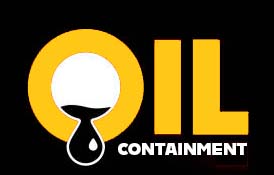In the oil industry, it is crucial to have proper containment barriers in place to prevent leaks and spills that can harm the environment and pose safety risks. Secondary containment is a key aspect of oil storage and transportation, ensuring that any potential leaks are contained within a designated area. One effective method for creating containment barriers is using polyurea coatings, which provide durable and flexible protection against chemical corrosion and mechanical damage.
Polyurea is a synthetic material that is commonly used in the oil industry for its excellent adhesion, chemical resistance, and waterproofing properties. When properly applied, polyurea coatings can form a seamless and impermeable barrier that can withstand harsh conditions and prevent leaks from spreading. In this article, we will discuss the steps involved in creating effective containment barriers using polyurea for secondary containment in the oil industry.
Step 1: Surface Preparation
Before applying polyurea coatings, it is essential to properly prepare the surface to ensure adhesion and longevity. This involves cleaning the surface to remove any dirt, grease, or contaminants that could interfere with the bonding of the polyurea. Additionally, any cracks or defects in the surface should be repaired to prevent leaks and ensure a smooth application of the coating.
Step 2: Application of Primer
To enhance adhesion, a primer should be applied to the surface before the polyurea coating. The primer acts as a bonding agent between the substrate and the polyurea, ensuring a strong and durable connection. It is important to choose a primer that is compatible with both the substrate and the polyurea coating to ensure optimal performance.
Step 3: Application of Polyurea Coating
Once the surface has been properly prepared and the primer has been applied, the polyurea coating can be sprayed or rolled onto the surface. The coating should be applied in multiple layers to achieve the desired thickness and coverage. It is important to follow the manufacturer’s instructions for mixing and applying the polyurea to ensure proper curing and adhesion.
Step 4: Inspection and Maintenance
After the polyurea coating has been applied, regular inspection and maintenance are essential to ensure the integrity of the containment barrier. Any damage or defects should be repaired promptly to prevent leaks and maintain the effectiveness of the barrier. Additionally, regular inspections can help identify potential issues before they escalate into larger problems.
In conclusion, creating effective containment barriers in the oil industry using polyurea coatings is essential for preventing leaks and spills that can harm the environment and pose safety risks. By following the steps outlined in this article, researchers can create durable and flexible containment barriers that provide long-lasting protection against chemical corrosion and mechanical damage. Proper surface preparation, application of primer, and regular inspection and maintenance are key aspects of ensuring the effectiveness of containment barriers in the oil industry.
